Case Studies.
Add Case Study
Our Case Study database tracks 18,926 case studies in the global enterprise technology ecosystem.
Filters allow you to explore case studies quickly and efficiently.
Download Excel
Filters
-
(5,794)
- (2,602)
- (1,765)
- (764)
- View all
-
(5,073)
- (2,519)
- (1,260)
- (761)
- View all
-
(4,407)
- (1,774)
- (1,292)
- (480)
- View all
-
(4,157)
- (2,048)
- (1,256)
- (926)
- View all
-
(2,488)
- (1,262)
- (472)
- (342)
- View all
- View all 15 Technologies
- (1,732)
- (1,626)
- (1,605)
- (1,460)
- (1,423)
- View all 42 Industries
- (5,781)
- (4,113)
- (3,091)
- (2,780)
- (2,671)
- View all 13 Functional Areas
- (2,568)
- (2,482)
- (1,866)
- (1,561)
- (1,537)
- View all 127 Use Cases
- (10,333)
- (3,499)
- (3,391)
- (2,981)
- (2,593)
- View all 9 Services
- (503)
- (432)
- (382)
- (301)
- (246)
- View all 737 Suppliers
Selected Filters
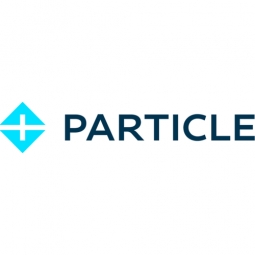
|
IoT-Driven Data Optimization: A Case Study on Service Thread
Service Thread, a leading American manufacturer of commercial thread and yarn, faced significant challenges in monitoring and analyzing their factory performance. With over 3,000 spindles across 115,000ft2 of floor space and 24 different machine types, the company struggled to effectively determine the actual utilization percentage of their factory. The traditional method of frequent and selective in-person inspections of the machines was not only time-consuming but also lacked accuracy. The company was in dire need of a solution that could provide real-time, accurate data on machine utilization to help them make informed business decisions and optimize their operations.
|
|
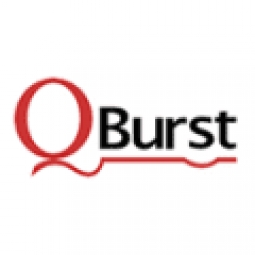
|
IoT Testing for Home Automation: A Case Study
The client, a leading consumer products company and a member of the Russell 1000 Index, was an emerging player in the home automation space. They offered electronic keyless entry locks for residential use, with home automation applications that enabled users to control lighting and security systems. The challenge was to ensure that the hardware and software of these IoT products worked seamlessly, with the security and performance of the IoT environment guaranteed. The client wanted to ensure that new features in the home automation platform were thoroughly tested before launch. This included QA for Wi-Fi door locks (software and firmware), interoperability testing, multi-country (localization) testing, automation of the Regression Suite (web/mobile/API), and performance and security auditing. The multiple scenarios that needed to be tested and the frequency of releases necessitated a move towards test automation.
|
|
_6.jpg)
|
Securing Mobile Applications with SSO Authorization and PKCE
The client, a US-based communication provider, was in the process of transitioning most of its services to mobile devices. They aimed to provide their users with easy, real-time, and seamless access to information, products, and services. However, they encountered issues with their authentication process, which was not robust enough and was vulnerable to attacks due to ineffective implementation of their authentication tokens and session management. The client realized the need for a solution that would facilitate secure access to resources through mobile apps without compromising performance. Two major problems were identified: the transmission of sensitive data through URL redirects during Single Sign-on (SSO) logins, and the increased security risks posed by SSO logins via web and mobile apps.
|
|

|
Streamlining Production and Improving Compliance: Realtek's Journey with InstallShield
Realtek Semiconductor Corporation, a company that prides itself on excellence in all aspects of its business, was facing challenges in maintaining efficiencies across its product lines that required frequent installer updates. The company was using node-locked instances of InstallShield for software installation on its production line. However, this approach was limiting their in-house capabilities and their ability to service customers efficiently offsite. The node-locked InstallShield licenses were installed on individual computers, each license purchased at a different time and having a different version. This led to schedule impacts due to the need to sort and manage through multiple versions of installation licenses. The staff was required to perform manual verification steps during installation to ensure the production database files were synchronized and that the versions of InstallShield were aligned. Additionally, Realtek's multiple product lines necessitated the creation/update of installers for the drivers and applications more than 10 times a day across the company, leading to inefficiencies and negatively impacting Realtek’s cycle time for creation of installers and product releases.
|
|

|
Accelerating Updates with InstallShield: A Case Study on Trend Micro Taiwan
Trend Micro Taiwan, a global leader in IT security, faced a significant challenge in updating their anti-virus drivers and applications. The company needed to create installers up to 10 times a day to support frequent updates, a task that was slowed down by the need to coordinate development teams across different time zones in Asia and North America. The lack of an automated installation development tool with robust features further complicated the process. The speed of updating installers was crucial to the company's success, as it directly impacted their ability to protect end users and secure networks against breaches from targeted attacks.
|
|

|
Implementing a Next-Gen MES for Medical Device Production at a Fraction of the Cost
A Medical Device Manufacturer was faced with the challenge of scaling up production for a new product introduction (NPI) within a 6-month timeline in a new greenfield assembly facility. The goal was to increase production from a few units a month built by engineers to hundreds of units a month by frontline workers. The engineering team needed to enable the frontline workers to assemble the units and record their activities at each step of the way via an eDHR for compliance purposes. The team foresaw challenges around overwhelming new staff with changing instructions and recording information. They concluded that using paper-based SOPs and history records was not a viable or efficient solution for onboarding a completely new team.
|
|

|
Digging Deeper Into the Connected Jobsite
Streamline digital connections between people, processes, and equipment.Today, this pioneering company continues to lead the way in both talent and modern technology deployment to deliver some of the industry’s most complex projects. With over more than 30 3D machine control systems that are used on dozers, excavators, motor graders, and skid steers; 30 rovers and total stations; and 50-plus base stations, the company maintains one of the largest technology-enabled fleets in the Upper Midwest.
|
|

|
Embedded Software Development for Bioprinters
Scaling their business at a brisk pace, CELLINK wanted to find a reliable tech partner with solid experience in the development of IoT systems who could provide experts in С++, Qt, Embedded Linux, Marlin, MQTT, and Flutter. With bioprinters already in production, CELLINK was searching for a dedicated team able to maintain their code through bug fixing and polishing to make their bioprinter devices function even better.
|
|
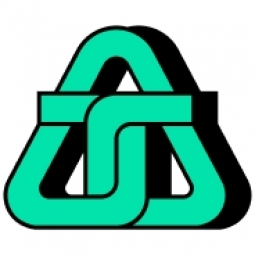
|
Telnyx enables reliable connectivity in COSMO smartwatches
COSMO, founded in 2020, embarked on a mission to help families stay digitally connected with their youngest members in a safe and meaningful manner. They achieved this through the development of the JrTrack 3 kids smartwatch, which combined communication functions like calling and texting with safety features such as 9-1-1 calling, geofencing, and unapproved call blocking. COSMO faced some technical hurdles as they developed their product. These included instances of patchy cellular coverage and inconsistent device connectivity, which directly impacted the reliability of their smartwatches. Such challenges posed a threat to the trust that parents placed in COSMO’s products, underscoring the need for a solution that could ensure steadfast reliability and uphold the company's commitment to their customers.
|
|

|
Freshdesk Boosts Cinnamon Hotels & Resorts' Response Time and Revenue
Cinnamon Hotels & Resorts, a member of John Keells Holdings PLC, is a chain of 15 hotels and resorts across Sri Lanka and the Maldives. The company prides itself on providing luxurious experiences that attract a large number of foreign travelers. However, the company faced a challenge in managing online enquiries. These enquiries were initially handled by different teams across properties, depending on who got to it first. But with teams busy creating delightful experiences for guests on their properties, online enquiries did not get the attention they needed. These responses were crucial as they served as the gateway to potential customers. The properties that responded the fastest had a higher chance of winning over customers. Hasara Fernando, Assistant Manager - Online Marketing, realized that Cinnamon would be able to achieve a lot more with a central team focused on online enquiries that worked off a centralized platform.
|
|

|
Digital Help's ManyChat Quiz: A Case Study on Subscriber Growth
Catalin Capusan, the Founder and CEO of Digital Help, a leading bot-building agency from Romania, was tasked with creating engaging lead generation sequences for his clients. One of his clients, Pera Novacovici, a Romanian-based psychologist and online coach, had previously worked with another digital ads agency to build an email list of nearly 100,000 subscribers. However, Pera was interested in exploring innovative ways to grow his subscriber list and improve engagement. He had interacted with a bot for Messenger and was intrigued by the potential of such a tool. He approached Catalin with the idea of creating a similar bot for his own use.
|
|

|
Park Place Technologies: Transforming Customer Engagement with IoT Chatbot
Park Place Technologies, a provider of proactive and predictive data center support and maintenance, was facing a challenge with their live chat system. The live chat was only available during certain hours, which meant they were missing out on potential conversations with prospects in different time zones. Additionally, they were unable to engage visitors who used their End of Service Life (EOSL) library page as a reference resource and then left the site without any interaction. The company needed a solution that could engage prospects 24/7, tap into new lead sources, and improve the speed of lead to opportunity and lead to close.
|
|

|
Furlenco's Successful Transition to App-Driven Subscriptions Using Contextual Engagement
Furlenco, India's largest furniture subscription-commerce company, was facing a significant challenge in customer engagement and retention. Despite successfully driving app installs, the company was experiencing a low subscription ratio, which was impacting the number of subscriptions coming in from their mobile app. The team identified several customer drop-off points across the customer journey that needed to be addressed. These included reaching out to prospective clients, formulating messages for better subscription rates, determining the frequency of messaging, improving the acquisition and onboarding experience to retain customers, and making the post-onboarding process more meaningful and engaging.
|
|

|
Albertsons' Seamless Omnichannel Shopping Experience for Over 30 Million Customers
Albertsons Companies, one of the largest grocers in the US, serves over 30 million customers each week through 19 different banners. The company faced the challenge of shifting customer demands and the need to provide a seamless shopping experience, whether in-store, online, or mobile. Albertsons' customer demographics varied greatly, and the company needed to meet the diverse demands of its customers. The company had multiple user IDs and passwords, which increased the attack surface of its IT infrastructure, making it more vulnerable to breaches. Albertsons needed to create a seamless, consistent IT experience in both the four-wall and no-wall environments, while maintaining the look-and-feel of the individual banners. The organization saw it as an opportunity to offer their customers a better experience.
|
|

|
Athenahealth's Transformation: Streamlining Patient Experience with IoT
Athenahealth, a healthcare technology company, was facing challenges with its legacy infrastructure as it expanded its patient and practitioner base. The company had multiple account credentials for patients, and each practice had to register patients and store their data separately. This led to a complex and disjointed user experience. Furthermore, the company was dealing with the challenge of ensuring data accessibility while maintaining robust security. The company needed a solution that would reduce friction, improve user experience, and enhance patient outcomes without compromising on security. The challenge was to find a solution that could handle the sensitive and highly regulated data that impacts people's lives, while providing a seamless digital experience for users.
|
|

|
ASML: Accelerating Microchip Manufacturing with Google Cloud AI and Machine Learning
ASML, a global leader in the semiconductor industry, faced a significant challenge with its new breed of machine learning product. The product, designed to predict process performance per device layer, needed to train itself due to frequent changes in device layer and manufacturing processes. Furthermore, the product had to monitor its own accuracy and retrain accordingly without any connection to ASML. The company needed a powerful, secure platform for building AI-driven products to meet customer demands. However, the semiconductor industry had been resistant to cloud solutions due to fears of compromising security in a field where intellectual property protection is critical.
|
|
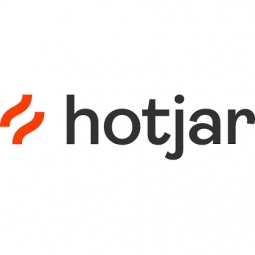
|
Leveraging Hotjar for Enhanced User Experience: A Case Study on Hussle
Hussle, an online marketplace for gyms and spas, faced several challenges in understanding user behavior and improving their product. Luke, the Product Lead at Hussle, was tasked with identifying and resolving issues that led to user churn, spotting bugs, and ensuring smooth launches of new features. The primary challenges included understanding why users were leaving the platform, identifying issues with new features, spotting broken user flows, and discovering bugs. The team needed to capture reliable feedback from users as they were leaving, which was a difficult task. Additionally, they needed to understand user interactions with new features and identify any issues that could hinder the user experience.
|
|

|
OTP Bank's Digital Transformation with Creatio’s Low-Code Platform
OTP Bank Romania, a subsidiary of OTP Group, one of the largest financial groups in Central and Eastern Europe, was facing challenges in scaling customer onboarding due to manual processes and disjointed technologies. The bank was committed to providing exceptional customer experiences and wanted to stay close to its customers, understanding them, and proactively responding to their shifting expectations. However, the limitations in their existing system were hindering their growth and customer service. The bank was in search of innovative ways to manage operations and improve customer service through various banking services. The ultimate goal was to accelerate market growth by reimagining its IT infrastructure and making the customer experience the starting point for workflow designs.
|
|

|
Ride-Sharing Platform Development for Facedrive
Facedrive, a Canadian ride-sharing platform, needed to develop a comprehensive solution from scratch. This included back end, front end, and mobile development for both iOS and Android platforms. The development team was tasked with implementing GPS positioning and route navigation, integrating with a payment platform, and creating a complex ride-sharing logic. They also needed to create an intuitive UX design. The challenges included updating the drivers' location information in real-time, estimating time and distance for each ride, synchronizing multiple servers, ensuring payment security through Stripe API integration, developing the ride-sharing logic, calculating rates for electric, hybrid, and gas vehicles, and ensuring smooth operation across multiple apps and platforms.
|
|

|
Unified Platform Streamlines Business Management for Leading UK Car Dealership
The client, a leading car dealership company in the UK, was facing challenges in streamlining the work of their business managers. The company represents prestigious car manufacturers and provides both new and used cars as well as after-sales services. However, the business managers had to use four different systems for the business management flow and continuously switch between them. This was causing inefficiencies and slowing down business processes. The client had recently acquired a leading car supermarket, further increasing the need for a unified system to speed up all business processes.
|
|

|
Transfinity VR: A Seamless Integration of VR and Motion Platform
Virtec Attractions, a company specializing in dynamic 4D attractions and VR solutions, aimed to provide users with a new type of entertainment by combining an immersive demo experience with their Transfinity motion platform. The main challenge was to create a smooth, fully integrated VR experience with the motion platform that would not cause motion sickness or discomfort to users. Another challenge was the rapid development and change of VR devices. As soon as a more advanced headset was brought to market, the development team had to adjust the software to the new hardware. This constant need for adaptation and improvement posed a significant challenge.
|
|

|
Expanding Battery Management Services to Embedded Systems
The client, a battery management solution provider, wanted to expand their market reach by making their solution compatible with embedded platforms. Their solution, which monitors individual cells within lithium-ion batteries, was not optimized for use on embedded platforms with microcontrollers. The solution could either be integrated as part of the Battery Management System (BMS) or operate independently on Docker or the cloud. Customers could retrieve data from the BMS for a specific time period, save it into a file, and incorporate it into the algorithm. The algorithm would then analyze the data and determine which cells work well and which do not. However, the client needed to analyze and prepare the solution for implementation on embedded systems.
|
|

|
Streamlining Business Transformation with OpenText and MS Office Integration
The client, a rapidly growing global company specializing in business transformation through various solutions and services, was seeking to enhance their services to better meet the needs of their key customers. The company, with over 4,500 skilled professionals and 30+ offices worldwide, provides ICT services and solutions based on a wide range of technologies, including OpenText, SAP, Microsoft, etc. The primary challenge was to integrate OpenText Extended ECM, an enterprise CMS platform that securely governs the information lifecycle by integrating with leading enterprise applications, with Microsoft Office 365. This integration was aimed at expanding the company's services and better matching the needs of its customers.
|
|

|
Digital Experience Platform Transformation for Telecom Infrastructure Provider
The client, a leading integrated Information and Communications Technology (ICT) infrastructure provider in Saudi Arabia, was facing challenges with their legacy systems inherited from their parent company. These outdated systems were hindering employee productivity and negatively impacting the customer experience. The client needed to improve the efficiency of these systems and enhance their user experience to streamline their employees’ operations and better serve their customers. They also needed to implement third-party integrations that were in use at the time. The client decided to implement a new unified Digital Experience Platform (DXP), a multifaceted platform for interaction, communication, and everyday work needs. However, they required assistance with defining the project scope and roadmap, designing the architecture and building the platform, as well as completing the necessary third-party integrations.
|
|

|
VR-iX: A Case Study on Multiplayer VR Shooter Game Development
N-iX game developers were tasked with the challenge of creating a unique multiplayer shooter game that leverages virtual reality technology. The game, VR-iX, was designed to explore the capabilities of the Photon multiplayer platform and the Unity game engine in VR. The developers faced several challenges during the development process. These included the development of an artificial intelligence (AI) that would provide the player with a challenging battle against a virtual opponent, creating a lightweight game design that would ensure an entertaining interactive experience, adjusting the game design to the controllers to make the gameplay feel natural, implementing user teleportation using the weapon feature, and smoothly integrating multiplayer with the game dynamics.
|
|
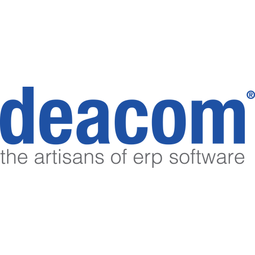
|
Tripling Sales with Deacom ERP: A Case Study on Copps Industries
Since 1979, Copps Industries has been a global provider of epoxy resins to various markets. However, the company faced challenges in scaling to meet market demand due to outdated technology and manual workarounds to fill in process gaps. The company relied heavily on people to deliver scalable and repeatable processes, which limited the volume of SKUs manageable by their small team. Copps was also burdened with an outdated disk-operating system (DOS) that no longer supported its business needs, and employees struggled with managing a paper trail of documents. The retirement of two 20+ year veterans further complicated matters, leading to issues with process control and onboarding new employees. Copps Industries needed a solution that would tighten process control, scale with its business, and centralize information for easy access.
|
|

|
Commsignia Works with Audi and Qualcomm for C-V2X in Virginia
Work zone detection is not cleard. Vehicle safety, road hazzards and fatalities are constraints.
|
|
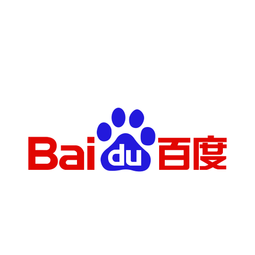
|
Baidu Cloud Supports Gian in Quality Assurance
As a leading manufacturer of precision parts in China, Gian Technology's customers include Samsung, OPPO, Vivo and other well-known enterprises. They have very high requirements for the precision and appearance of products. Every year, Gian invest a substantial amount of capital in manpower and capital in quality control and quality inspection. The "original" method of the traditional naked eye + magnifying glass is intensive and boring, making many young people reluctant to choose this job. The gap between business volume and manpower is getting bigger and bigger, and it is difficult to meet the quality inspection needs in three shifts and eight hours. Overtime is a common occurrence.
|
|

|
Leveraging AI to Upgrade Product Quality Management in Speed and Accuracy
To succeed in the fiercely competitive LCD manufacturing industry, CSOT must deliver high-quality products within a tight time frame, but time-consuming product inspections have hampered its agility. Quality inspectors had to inspect each LCD screen individually to check for flaws. This takes quite a bit of time.
|
|

|
Align Technology's Transition to Heroku for Enhanced Consumer App Experience
Align Technology, a global medical device company, was facing challenges with its consumer-facing applications, including their corporate site and product sites. One of their key applications, the Invisalign Smile Assessment app, along with other applications, were used by thousands of consumers each month and required almost daily updates. These updates ranged from large iterations to minor changes on individual documents. The company found it increasingly difficult to perform these quick updates, a limitation that posed challenges not only for the business teams but also for their IT developers. The need for a more efficient and agile solution was evident.
|
|

